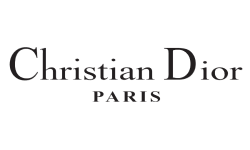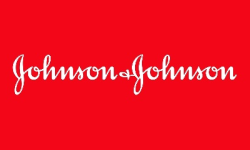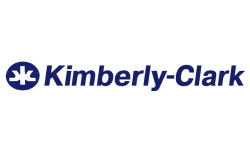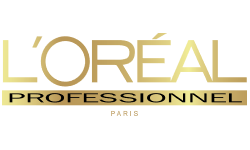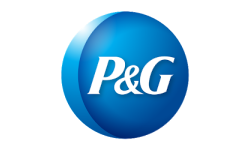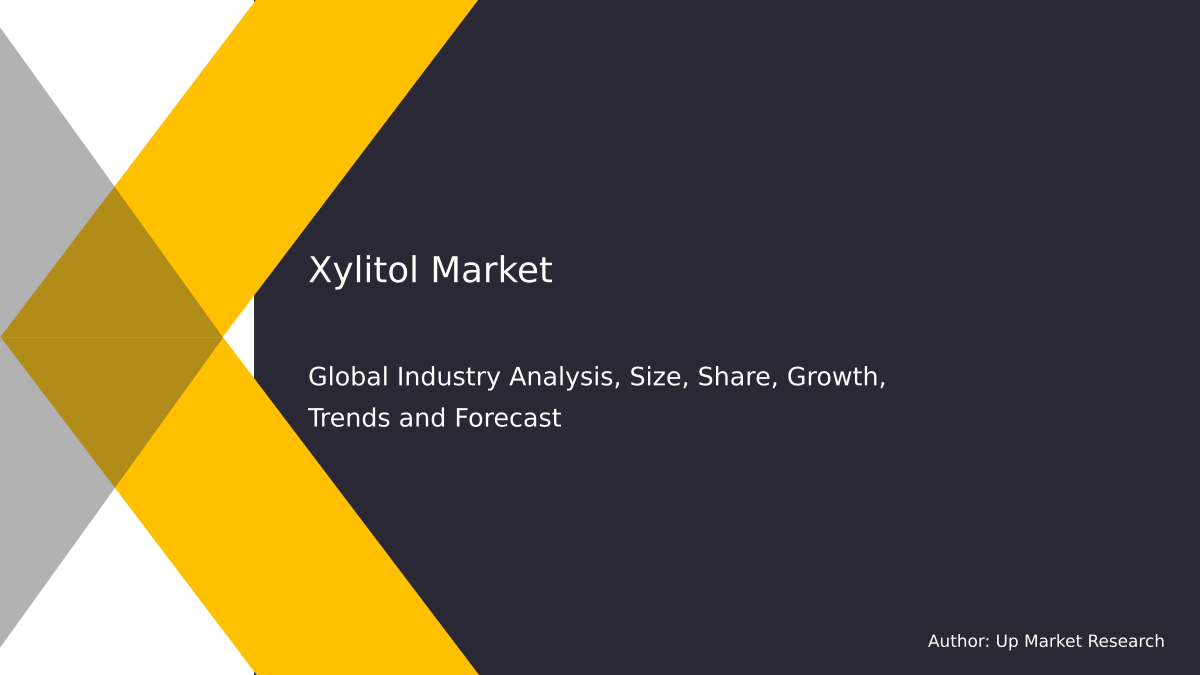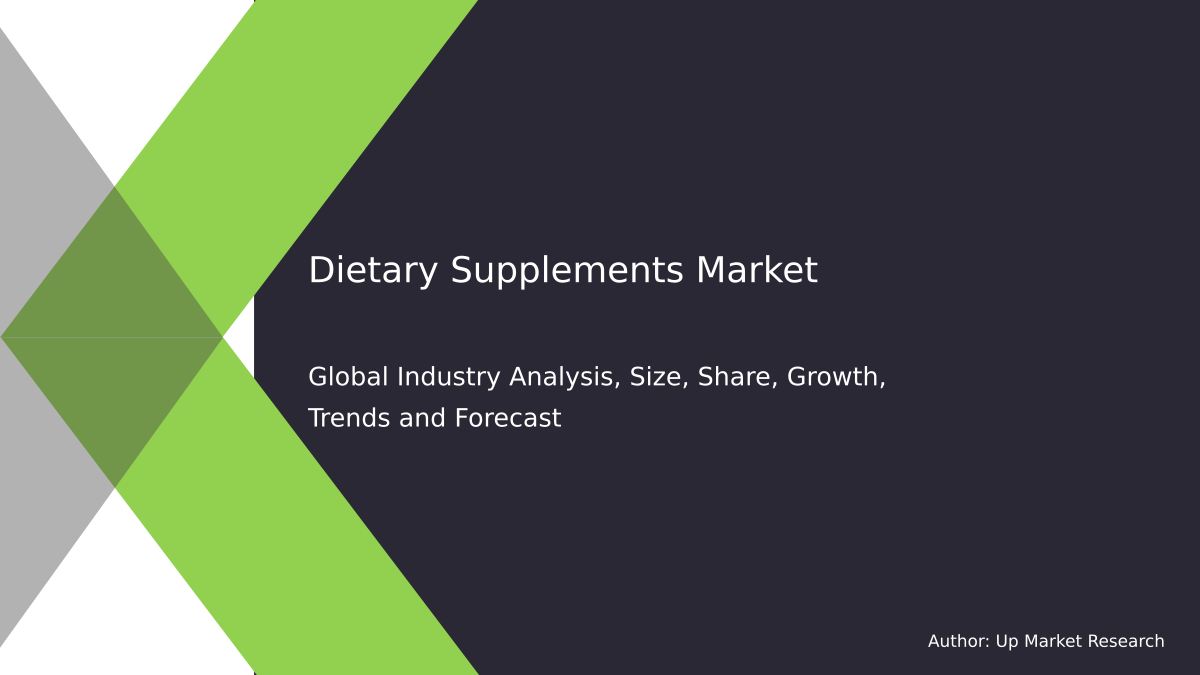
Global Meat Stabilizers Blends Market by Source (Plant, Microbial, Synthetic, Seaweed, Animal), by Application (HoReCa, Pet Food, Meat Processing) and Region (North America, Latin America, Europe, Asia Pacific and Middle East & Africa), Forecast To 2028
Summary of the Report
In 2018, the global market for meat stabilizers blended was worth USD 1.99 billion. This is due to the increasing importance of stabilizers for improving the texture and smoothness in finished goods. The product demand is expected to rise as a result of rising product applications in emerging economies like India and China. Stabilizer blends will be more in demand as a result of the expansion of the meat sector.
Globally, millennials are increasingly eating out. The restaurant industry is being driven by a changing lifestyle and increasing purchasing power. According to the United States Department of Agriculture (USDA), millennials spend 44 % of their food spending on dining out. This trend has been supported by a growing number of professionals and a work-life balance. In the near future, there will be a rise in demand for foodservice stabilizers.
The demand for organic food in developed countries such as the U.S. and U.K. will increase the potential for organic stabilizers to be used in this industry. To meet consumer demand, manufacturers focus on R&D for organic products. In the near future, there will be an increase in organic meat producers worldwide. This will likely lead to a greater use of stabilizing additives.
Stabilized blends can improve the product's quality and flavor. Producers add flavorings to preserve the product's taste and reduce fat content. This is based on customer preference. This trend will increase the market for stabilizers in food processing.
Source Insights
The global market for meat stabilizers blends was dominated by synthetic and animal sources, which together accounted for over 55% of all revenue. The most widely used food processing stabilizer is blood plasma. It is used as an emulsifier and clarifier, nutritional component, color additive, and a nutritional component. The ability to form gel makes it more popular in the food processing industry. It gives processed foods such as hot dogs and cooked Ham the desired texture and color.
Due to growing demand for natural food stabilisers agents, the plant segment will expand at 8.5% CAGR between 2019 and 2025. Continuous R&D will expand the range of plant-based additives. This trend has been adopted rapidly by the food processing industry due to increasing demand for natural ingredients from developed countries like the U.S., U.K. and Germany.
Application Insights
In 2018, the meat processing industry accounted for more than 70% of global revenue. The meat processing industry has seen significant growth over the last few years. Due to lower production costs and higher spending on advanced technology, the expansion of the broiler meat market in developing countries such as Brazil, China and India is expected to continue to be a positive factor for growth. The significant increase in demand for frozen food in developed countries, such as the U.S., Germany and Japan due to the growing consumption of products by millennials, is expected to open up new opportunities.
HoReCa, or food service application, is expected to grow at 8.3% annually between 2019 and 2025. This growth is mainly due to the rising popularity of eating out. According to a study, 18% of Europeans eat out all the time. There are more cafes, bars, restaurants and drinking establishments around the world than ever before. In the coming years, the market will be accelerated by fast-growing food chains from developing countries like Brazil, India, China, and China. Market growth has been fueled by the rapid adoption of online food services. Online food services have become very popular among working professionals and millennials over the last few years. This trend is expected be a boon for the market in the near term.
Regional Insights
North America had a greater market share than 30% in revenue in 2018, and that was more than any other country. American consumers are increasingly consuming hot dogs, bacon, and sausages. This has increased regional product demand. The United States is a major producer of poultry and beef meat. This has led to a significant increase in the demand for meat stabilisers in this country.
Europe held a large market share in 2018, due to the high demand in Europe for processed foods. According to a study, 18% of Europeans eat all their meals outside of home. This trend is expected to increase the range of product applications in Europe's foodservice industry.
Asia Pacific will see the highest CAGR of over 10% between 2019 and 2025. China was the world's largest producer of meat products, including beef, pork, and poultry in 2018. Regional growth is expected to be fueled by the expanding food processing industry in developing nations like India, Pakistan and Indonesia.
Market Share Insights & Key Companies
The major manufacturers are Cargill, Incorporated, DowDuPont Inc., The Meat Cracks Technologie GmbH, Kerry Group plc, The Archer Daniels Midland Company, Tate & Lyle PLC, Tate & Lyle PLC, Palsgaard A/S, Ashland, Hydrosol GmbH & co. KG, and Ingredion Incorporated. There are many small and large players in the market.
Producers are expanding their business strategically by entering new markets and broadening the product range. Kerry Group plc, for example, built its first production facility in Moscow, Russia in September 2018. The facility was initially used for the production of meat, snacks and processing ingredients. The company expects this new facility to increase its global reach over the next few years.
Meat Stabilizers Blends Market Report Scope
The Report Covers Certain Segments
This report predicts revenue growth at the global, regional, or country level and offers an analysis of industry trends for each sub-segment from 2015 to 2025. Grand View Research segmented the global market for meat stabilizers blends based on region, source, and application.
-
Source Outlook (Revenue USD Million, 2015-2025)
-
Plant
-
Seaweed
-
Animal
-
Microbial
-
Synthetic
-
-
Application Outlook (Revenue USD Million, 2015-2025)
-
Meat Processing
-
HoReCa
-
Pet Food
-
-
Outlook (Revenue USD Million, 2015-2025)
-
North America
-
U.S.
-
-
Europe
-
Germany
-
U.K.
-
-
Asia Pacific
-
China
-
India
-
-
Central & South America
-
Brazil
-
-
Middle East & Africa
-
South Africa
-
-
These are the most frequently asked questions about this report
What is the size of the market for meat stabilizers and blends?b. Global meat stabilizers blends market was valued at USD 2.13 billion in 2019, and is forecast to grow to USD 2.27 billion by 2020.
What are the meat stabilizers and market growth?b. Global meat stabilizers blends will grow at 7.2% compound annual growth rate from 2019 to 2025, to reach USD 3.25 Billion by 2025.
Which market segment had the largest share of meat stabilizers blendeds?b. With a 34.9% share in 2019, Asia Pacific was the dominant market for meat stabilizers blends. This can be attributed to the growing regional food processing industry, including in India, Pakistan and Indonesia.
What are the major players in the meat stabilizers blends industry?b. b.
What are the main factors that drive the market for meat stabilizers?b. Market growth is being driven by rising product applications in developing countries like China and India, and increasing importance of stabilizing agent for improving texture and smoothness.
Up Market Research published a new report titled “Meat Stabilizers Blends Market research report which is segmented by Source (Plant, Microbial, Synthetic, Seaweed, Animal), by Application (HoReCa, Pet Food, Meat Processing), By Players/Companies Incorporated; DowDuPont Inc; The Meat Cracks Technologie GmbH; Kerry Group plc; The Archer Daniels Midland Company; Tate & Lyle PLC; Palsgaard A/S; Ashland; Hydrosol GmbH & Co KG; and Ingredion Incorporated, Cargill”. As per the study the market is expected to grow at a CAGR of XX% in the forecast period.
| Report Attributes | Report Details |
| Report Title | Meat Stabilizers Blends Market Research Report |
| By Source | Plant, Microbial, Synthetic, Seaweed, Animal |
| By Application | HoReCa, Pet Food, Meat Processing |
| By Companies | Incorporated; DowDuPont Inc; The Meat Cracks Technologie GmbH; Kerry Group plc; The Archer Daniels Midland Company; Tate & Lyle PLC; Palsgaard A/S; Ashland; Hydrosol GmbH & Co KG; and Ingredion Incorporated, Cargill |
| Regions Covered | North America, Europe, APAC, Latin America, MEA |
| Base Year | 2020 |
| Historical Year | 2018 to 2019 (Data from 2010 can be provided as per availability) |
| Forecast Year | 2028 |
| Number of Pages | 213 |
| Number of Tables & Figures | 150 |
| Customization Available | Yes, the report can be customized as per your need. |
The report covers comprehensive data on emerging trends, market drivers, growth opportunities, and restraints that can change the market dynamics of the industry. It provides an in-depth analysis of the market segments which include products, applications, and competitor analysis.

Global Meat Stabilizers Blends Market Report Segments:
The market is segmented by Source (Plant, Microbial, Synthetic, Seaweed, Animal), by Application (HoReCa, Pet Food, Meat Processing).
Meat Stabilizers Blends Market research report delivers a close watch on leading competitors with strategic analysis, micro and macro market trend and scenarios, pricing analysis and a holistic overview of the market situations in the forecast period. It is a professional and a detailed report focusing on primary and secondary drivers, market share, leading segments and geographical analysis. Further, key players, major collaborations, merger & acquisitions along with trending innovation and business policies are reviewed in the report.
Key Benefits for Industry Participants & Stakeholders:
- Industry drivers, restraints, and opportunities covered in the study
- Neutral perspective on the market performance
- Recent industry trends and developments
- Competitive landscape & strategies of key players
- Potential & niche segments and regions exhibiting promising growth covered
- Historical, current, and projected market size, in terms of value
- In-depth analysis of the Meat Stabilizers Blends Market
Overview of the regional outlook of the Meat Stabilizers Blends Market:
Based on region, the market is segmented into North America, Europe, Asia Pacific, Latin America and Middle East & Africa (MEA). North America region is further bifurcated into countries such as U.S., and Canada. The Europe region is further categorized into U.K., France, Germany, Italy, Spain, Russia, and Rest of Europe. Asia Pacific is further segmented into China, Japan, South Korea, India, Australia, South East Asia, and Rest of Asia Pacific. Latin America region is further segmented into Brazil, Mexico, and Rest of Latin America, and the MEA region is further divided into GCC, Turkey, South Africa, and Rest of MEA.

Highlights of The Meat Stabilizers Blends Market Report:
- The market structure and projections for the coming years.
- Drivers, restraints, opportunities, and current trends of Meat Stabilizers Blends Market.
- Historical data and forecast.
- Estimations for the forecast period 2028.
- Developments and trends in the market.
1. Plant
2. Microbial
3. Synthetic
4. Seaweed
5. Animal
7. By Application:1. HoReCa
2. Pet Food
3. Meat Processing
- Market scenario by region, sub-region, and country.
- Market share of the market players, company profiles, product specifications, SWOT analysis, and competitive landscape.
- Analysis regarding upstream raw materials, downstream demand, and current market dynamics.
- Government Policies, Macro & Micro economic factors are also included in the report.
We have studied the Meat Stabilizers Blends Market in 360 degrees via. both primary & secondary research methodologies. This helped us in building an understanding of the current market dynamics, supply-demand gap, pricing trends, product preferences, consumer patterns & so on. The findings were further validated through primary research with industry experts & opinion leaders across countries. The data is further compiled & validated through various market estimation & data validation methodologies. Further, we also have our in-house data forecasting model to predict market growth up to 2028.
How you may use our products:
- Correctly Positioning New Products
- Market Entry Strategies
- Business Expansion Strategies
- Consumer Insights
- Understanding Competition Scenario
- Product & Brand Management
- Channel & Customer Management
- Identifying Appropriate Advertising Appeals

Reasons to Purchase the Meat Stabilizers Blends Market Report:
- The report includes a plethora of information such as market dynamics scenario and opportunities during the forecast period
- Segments and sub-segments include quantitative, qualitative, value (USD Million,) and volume (Units Million) data.
- Regional, sub-regional, and country level data includes the demand and supply forces along with their influence on the market.
- The competitive landscape comprises share of key players, new developments, and strategies in the last three years.
- Comprehensive companies offering products, relevant financial information, recent developments, SWOT analysis, and strategies by these players.
Chapter 2 Assumptions and Acronyms Used
Chapter 3 Research Methodology
Chapter 4 Meat Stabilizers Blends Market Overview
4.1 Introduction
4.1.1 Market Taxonomy
4.1.2 Market Definition
4.1.3 Macro-Economic Factors Impacting the Market Growth
4.2 Meat Stabilizers Blends Market Dynamics
4.2.1 Market Drivers
4.2.2 Market Restraints
4.2.3 Market Opportunity
4.3 Meat Stabilizers Blends Market - Supply Chain Analysis
4.3.1 List of Key Suppliers
4.3.2 List of Key Distributors
4.3.3 List of Key Consumers
4.4 Key Forces Shaping the Meat Stabilizers Blends Market
4.4.1 Bargaining Power of Suppliers
4.4.2 Bargaining Power of Buyers
4.4.3 Threat of Substitution
4.4.4 Threat of New Entrants
4.4.5 Competitive Rivalry
4.5 Global Meat Stabilizers Blends Market Size & Forecast, 2018-2028
4.5.1 Meat Stabilizers Blends Market Size and Y-o-Y Growth
4.5.2 Meat Stabilizers Blends Market Absolute $ Opportunity
Chapter 5 Global Meat Stabilizers Blends Market Analysis and Forecast by Source
5.1 Introduction
5.1.1 Key Market Trends & Growth Opportunities by Source
5.1.2 Basis Point Share (BPS) Analysis by Source
5.1.3 Absolute $ Opportunity Assessment by Source
5.2 Meat Stabilizers Blends Market Size Forecast by Source
5.2.1 Plant
5.2.2 Microbial
5.2.3 Synthetic
5.2.4 Seaweed
5.2.5 Animal
5.3 Market Attractiveness Analysis by Source
Chapter 6 Global Meat Stabilizers Blends Market Analysis and Forecast by Application
6.1 Introduction
6.1.1 Key Market Trends & Growth Opportunities by Application
6.1.2 Basis Point Share (BPS) Analysis by Application
6.1.3 Absolute $ Opportunity Assessment by Application
6.2 Meat Stabilizers Blends Market Size Forecast by Application
6.2.1 HoReCa
6.2.2 Pet Food
6.2.3 Meat Processing
6.3 Market Attractiveness Analysis by Application
Chapter 7 Global Meat Stabilizers Blends Market Analysis and Forecast by Region
7.1 Introduction
7.1.1 Key Market Trends & Growth Opportunities by Region
7.1.2 Basis Point Share (BPS) Analysis by Region
7.1.3 Absolute $ Opportunity Assessment by Region
7.2 Meat Stabilizers Blends Market Size Forecast by Region
7.2.1 North America
7.2.2 Europe
7.2.3 Asia Pacific
7.2.4 Latin America
7.2.5 Middle East & Africa (MEA)
7.3 Market Attractiveness Analysis by Region
Chapter 8 Coronavirus Disease (COVID-19) Impact
8.1 Introduction
8.2 Current & Future Impact Analysis
8.3 Economic Impact Analysis
8.4 Government Policies
8.5 Investment Scenario
Chapter 9 North America Meat Stabilizers Blends Analysis and Forecast
9.1 Introduction
9.2 North America Meat Stabilizers Blends Market Size Forecast by Country
9.2.1 U.S.
9.2.2 Canada
9.3 Basis Point Share (BPS) Analysis by Country
9.4 Absolute $ Opportunity Assessment by Country
9.5 Market Attractiveness Analysis by Country
9.6 North America Meat Stabilizers Blends Market Size Forecast by Source
9.6.1 Plant
9.6.2 Microbial
9.6.3 Synthetic
9.6.4 Seaweed
9.6.5 Animal
9.7 Basis Point Share (BPS) Analysis by Source
9.8 Absolute $ Opportunity Assessment by Source
9.9 Market Attractiveness Analysis by Source
9.10 North America Meat Stabilizers Blends Market Size Forecast by Application
9.10.1 HoReCa
9.10.2 Pet Food
9.10.3 Meat Processing
9.11 Basis Point Share (BPS) Analysis by Application
9.12 Absolute $ Opportunity Assessment by Application
9.13 Market Attractiveness Analysis by Application
Chapter 10 Europe Meat Stabilizers Blends Analysis and Forecast
10.1 Introduction
10.2 Europe Meat Stabilizers Blends Market Size Forecast by Country
10.2.1 Germany
10.2.2 France
10.2.3 Italy
10.2.4 U.K.
10.2.5 Spain
10.2.6 Russia
10.2.7 Rest of Europe
10.3 Basis Point Share (BPS) Analysis by Country
10.4 Absolute $ Opportunity Assessment by Country
10.5 Market Attractiveness Analysis by Country
10.6 Europe Meat Stabilizers Blends Market Size Forecast by Source
10.6.1 Plant
10.6.2 Microbial
10.6.3 Synthetic
10.6.4 Seaweed
10.6.5 Animal
10.7 Basis Point Share (BPS) Analysis by Source
10.8 Absolute $ Opportunity Assessment by Source
10.9 Market Attractiveness Analysis by Source
10.10 Europe Meat Stabilizers Blends Market Size Forecast by Application
10.10.1 HoReCa
10.10.2 Pet Food
10.10.3 Meat Processing
10.11 Basis Point Share (BPS) Analysis by Application
10.12 Absolute $ Opportunity Assessment by Application
10.13 Market Attractiveness Analysis by Application
Chapter 11 Asia Pacific Meat Stabilizers Blends Analysis and Forecast
11.1 Introduction
11.2 Asia Pacific Meat Stabilizers Blends Market Size Forecast by Country
11.2.1 China
11.2.2 Japan
11.2.3 South Korea
11.2.4 India
11.2.5 Australia
11.2.6 South East Asia (SEA)
11.2.7 Rest of Asia Pacific (APAC)
11.3 Basis Point Share (BPS) Analysis by Country
11.4 Absolute $ Opportunity Assessment by Country
11.5 Market Attractiveness Analysis by Country
11.6 Asia Pacific Meat Stabilizers Blends Market Size Forecast by Source
11.6.1 Plant
11.6.2 Microbial
11.6.3 Synthetic
11.6.4 Seaweed
11.6.5 Animal
11.7 Basis Point Share (BPS) Analysis by Source
11.8 Absolute $ Opportunity Assessment by Source
11.9 Market Attractiveness Analysis by Source
11.10 Asia Pacific Meat Stabilizers Blends Market Size Forecast by Application
11.10.1 HoReCa
11.10.2 Pet Food
11.10.3 Meat Processing
11.11 Basis Point Share (BPS) Analysis by Application
11.12 Absolute $ Opportunity Assessment by Application
11.13 Market Attractiveness Analysis by Application
Chapter 12 Latin America Meat Stabilizers Blends Analysis and Forecast
12.1 Introduction
12.2 Latin America Meat Stabilizers Blends Market Size Forecast by Country
12.2.1 Brazil
12.2.2 Mexico
12.2.3 Rest of Latin America (LATAM)
12.3 Basis Point Share (BPS) Analysis by Country
12.4 Absolute $ Opportunity Assessment by Country
12.5 Market Attractiveness Analysis by Country
12.6 Latin America Meat Stabilizers Blends Market Size Forecast by Source
12.6.1 Plant
12.6.2 Microbial
12.6.3 Synthetic
12.6.4 Seaweed
12.6.5 Animal
12.7 Basis Point Share (BPS) Analysis by Source
12.8 Absolute $ Opportunity Assessment by Source
12.9 Market Attractiveness Analysis by Source
12.10 Latin America Meat Stabilizers Blends Market Size Forecast by Application
12.10.1 HoReCa
12.10.2 Pet Food
12.10.3 Meat Processing
12.11 Basis Point Share (BPS) Analysis by Application
12.12 Absolute $ Opportunity Assessment by Application
12.13 Market Attractiveness Analysis by Application
Chapter 13 Middle East & Africa (MEA) Meat Stabilizers Blends Analysis and Forecast
13.1 Introduction
13.2 Middle East & Africa (MEA) Meat Stabilizers Blends Market Size Forecast by Country
13.2.1 Saudi Arabia
13.2.2 South Africa
13.2.3 UAE
13.2.4 Rest of Middle East & Africa (MEA)
13.3 Basis Point Share (BPS) Analysis by Country
13.4 Absolute $ Opportunity Assessment by Country
13.5 Market Attractiveness Analysis by Country
13.6 Middle East & Africa (MEA) Meat Stabilizers Blends Market Size Forecast by Source
13.6.1 Plant
13.6.2 Microbial
13.6.3 Synthetic
13.6.4 Seaweed
13.6.5 Animal
13.7 Basis Point Share (BPS) Analysis by Source
13.8 Absolute $ Opportunity Assessment by Source
13.9 Market Attractiveness Analysis by Source
13.10 Middle East & Africa (MEA) Meat Stabilizers Blends Market Size Forecast by Application
13.10.1 HoReCa
13.10.2 Pet Food
13.10.3 Meat Processing
13.11 Basis Point Share (BPS) Analysis by Application
13.12 Absolute $ Opportunity Assessment by Application
13.13 Market Attractiveness Analysis by Application
Chapter 14 Competition Landscape
14.1 Meat Stabilizers Blends Market: Competitive Dashboard
14.2 Global Meat Stabilizers Blends Market: Market Share Analysis, 2019
14.3 Company Profiles (Details – Overview, Financials, Developments, Strategy)
14.3.1 Incorporated; DowDuPont Inc; The Meat Cracks Technologie GmbH; Kerry Group plc; The Archer Daniels Midland Company; Tate & Lyle PLC; Palsgaard A/S; Ashland; Hydrosol GmbH & Co KG; and Ingredion Incorporated
14.3.2 Cargill
The global Meat Stabilizers Blends market has been segmented based on
By Source
- Plant
- Microbial
- Synthetic
- Seaweed
- Animal
- HoReCa
- Pet Food
- Meat Processing
- Asia Pacific
- North America
- Latin America
- Europe
- Middle East & Africa
- Incorporated; DowDuPont Inc; The Meat Cracks Technologie GmbH; Kerry Group plc; The Archer Daniels Midland Company; Tate & Lyle PLC; Palsgaard A/S; Ashland; Hydrosol GmbH & Co KG; and Ingredion Incorporated
- Cargill
Related Reports
Some other reports from this category!

